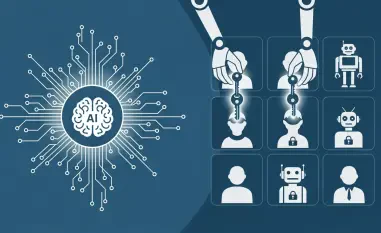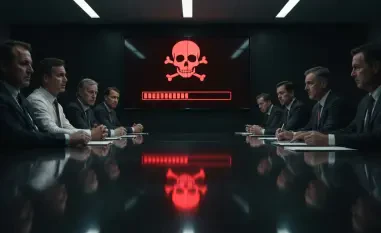What happens when a company critical to developing life-saving drugs is suddenly locked out of its own systems, and how does such a crisis unfold in the heart of Indiana? Inotiv, a pharmaceutical contract research organization with nearly 2,000 employees, faced this chilling reality on August 8 when a ransomware attack encrypted vital networks, halting operations and threatening the very innovations that countless patients depend on. This isn’t just a story of digital disruption—it’s a stark warning about the fragility of an industry at the intersection of health and technology. Dive into the unfolding crisis that has shaken the pharmaceutical world and raised urgent questions about cybersecurity.
The Stakes of a Cyber Siege in Pharma
The ransomware attack on Inotiv isn’t merely a corporate headache; it’s a crisis with ripple effects across global healthcare. As a key player in drug development and medical device research, any delay in Inotiv’s operations can stall critical advancements, potentially affecting treatments reaching the market. The incident, disclosed in a filing to the US Securities and Exchange Commission, underscores a terrifying truth: pharmaceutical companies are high-value targets for cybercriminals seeking to exploit sensitive data and disrupt essential services. This breach serves as a wake-up call, highlighting the dire consequences when innovation is held hostage by digital threats.
The importance of this story lies in its broader implications. With the healthcare sector increasingly reliant on digital systems for research and data management, a single attack can compromise patient safety and erode trust in an entire industry. Inotiv’s struggle mirrors a growing trend where ransomware groups target organizations with the most to lose, capitalizing on the urgency to restore operations. Understanding this event is crucial for grasping how vulnerable critical industries are to cybercrime and why robust defenses are no longer optional but mandatory.
Unpacking the Devastation at Inotiv
The attack struck with precision on August 8, as a threat actor infiltrated Inotiv’s systems, encrypting key networks and blocking access to essential data and applications. This wasn’t a minor glitch—research and development processes central to drug innovation ground to a screeching halt. The immediate impact was a severe disruption in workflows, with teams unable to access the tools needed to advance critical projects, exposing the fragility of relying heavily on interconnected digital infrastructure.
Compounding the chaos, the ransomware group Qilin claimed responsibility, announcing on August 11 via their Tor-based leak site that they had stolen 176 gigabytes of sensitive information. This allegedly included agreements, financial records, and internal procedures—data that, if exposed, could shatter client confidence and hand competitors an unfair edge. While Inotiv has remained tight-lipped on confirming Qilin’s claims, the mere possibility of such a leak adds a layer of reputational risk to an already dire situation, illustrating how cyberattacks can inflict wounds far beyond immediate operational setbacks.
In a bid to mitigate the damage, the company swiftly shifted some functions to offline alternatives, a move aimed at preserving core operations while remediation efforts began. Yet, this workaround introduced inefficiencies, and the timeline for full system restoration remains shrouded in uncertainty. The struggle to regain control over encrypted systems reveals the daunting challenge of recovery, especially in a sector where every lost day can delay life-changing medical breakthroughs.
Why Pharma Is a Prime Target for Ransomware
Beyond Inotiv’s ordeal, the pharmaceutical industry as a whole faces an escalating threat from ransomware. Cybercriminals are drawn to this sector due to the treasure trove of intellectual property and the catastrophic fallout of operational downtime. A 2023 report from Cybersecurity Ventures estimated that ransomware costs could reach $265 billion annually by 2031, with healthcare and pharma among the hardest-hit sectors. These attacks exploit the high stakes of delayed drug trials or compromised patient data, often pressuring companies into paying hefty ransoms.
The sophistication of these threats continues to evolve, as seen in parallel breaches at companies like Bragg, a gambling tech firm, and Manpower, which impacted 140,000 individuals. For pharma firms, the risk isn’t just financial—it’s deeply tied to public health. A stalled clinical trial or leaked research can have far-reaching consequences, undermining years of work and endangering lives. This growing vulnerability demands a reevaluation of how the industry approaches cybersecurity, recognizing that digital defense is as critical as the science itself.
Expert Perspectives on the Rising Cyber Threat
Cybersecurity analysts have been quick to contextualize Inotiv’s plight within a larger, alarming pattern. “Ransomware attacks on pharmaceutical companies aren’t just increasing—they’re becoming more targeted and destructive,” noted a prominent industry expert during a recent panel discussion. The consensus is clear: firms like Inotiv, pivotal to public health, must adopt proactive measures, from advanced threat detection to employee training, to counter increasingly cunning adversaries.
While specifics of the attacker remain unconfirmed by Inotiv, the company’s rapid pivot to containment—isolating affected systems and initiating recovery protocols—has been acknowledged as a necessary first step. Experts stress, however, that such reactive strategies alone aren’t enough. “The industry needs to invest in resilience, not just response,” another specialist emphasized, pointing to the need for continuous system audits and fortified data protection. These insights paint a picture of an industry at a crossroads, grappling with how to balance innovation with security.
The dialogue around this incident also sheds light on the role of ransomware groups like Qilin, known for exploiting critical sectors. Their alleged theft of sensitive data underscores a chilling reality: stolen information can be weaponized, sold, or leaked, amplifying the damage. This expert commentary reinforces the urgency for pharmaceutical entities to fortify their defenses, ensuring they aren’t just reacting to crises but preventing them.
Charting a Path Forward: Recovery and Defense Strategies
For Inotiv and others in the pharmaceutical realm, navigating the aftermath of a ransomware attack requires a multi-pronged approach. Immediate action, such as isolating compromised systems and deploying offline solutions, proved vital in maintaining some level of functionality during the crisis. However, this is merely a stopgap—long-term recovery hinges on meticulous restoration of encrypted networks and thorough investigation to prevent recurrence, a process that demands both time and resources.
Prevention must take center stage moving forward. Conducting regular cybersecurity audits to pinpoint weaknesses before they’re exploited is a critical step for any firm in this sector. Additionally, establishing comprehensive data backup systems can minimize downtime during an attack, ensuring that vital research isn’t lost to encryption. Drawing from best practices, companies should also simulate breach scenarios through training exercises, equipping staff to respond swiftly and effectively to real threats.
Collaboration across the industry offers another layer of defense. Sharing threat intelligence and partnering with cybersecurity firms can help build a collective shield against ransomware. As the attack on Inotiv demonstrated, no company is immune, but a unified front can deter cybercriminals by raising the cost and complexity of their operations. These strategies collectively form a blueprint for resilience, tailored to protect the unique and high-stakes environment of pharmaceutical innovation.
Reflecting on a Digital Reckoning
Looking back, the ransomware assault on Inotiv stood as a grim reminder of the vulnerabilities embedded in the pharmaceutical sector’s reliance on digital systems. It exposed how a single breach could disrupt operations, threaten sensitive data, and jeopardize advancements critical to global health. The incident, marked by encrypted networks and Qilin’s claims of stolen information, left an indelible mark on how the industry perceived its own security.
Moving beyond that crisis, the focus shifted toward actionable solutions. Strengthening cybersecurity frameworks, investing in robust backup systems, and fostering industry-wide cooperation emerged as essential steps to safeguard against future attacks. These measures, born from the lessons of Inotiv’s struggle, aimed to ensure that innovation in healthcare would no longer be held captive by cyber threats, paving the way for a more secure foundation in the years ahead.













